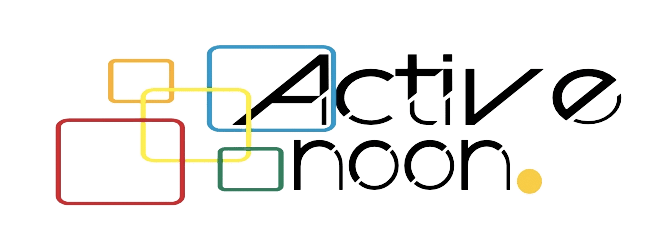The COVID-19 pandemic will have a huge influence on healthcare systems as well. This health epidemic has brought the whole world economy to a halt. There was a lot of focus on the digital health community to deliver health solutions at this time. Many solutions, such as worldwide dashboards that integrate data from WHO and CDC, or applications for the general public, have been developed.
They give real-time information on current cases and notify you if you have had contact with a verified or suspected case.
Are you considering developing your own healthcare software? Continue reading.
Why would you create healthcare software?
Among virtual reality technologies, wearable medical devices, and on-demand healthcare software development is a major option for digital transformation in healthcare. In the sector, there is a growing need for app development. The use of medical software by both medical practitioners and patients is increasing. The medical system is increasingly individualised as a result of digital technologies, allowing for continuous treatment at any location and at any time.
The primary purpose of such apps is to build a customer-centric digital healthcare ecosystem. There is a need to develop a scalable information space that can be utilised in both clinical institutions and regional networks. Patients, medical consultants, and healthcare practitioners gain from the use of information systems.
Aside from that, healthcare software provides advantages such as:
Advantages For Patients
- Enhance user satisfaction
- Offers for simple connection with physicians and access to test results and medical history
- Allows for remote appointment scheduling supports self-management via symptom monitoring, leading in improved prevention
- Transforms the patient-doctor interaction into a more collaborative one, provides detailed information, and educates on health concerns
Advantages for Physicians and Health-Care Institutions
- Because of electronic health records, it is possible to manage practices more easily.
- Assists in the flawless management of all processes in hospitals and offers communication tools for health organisations
- Decreases expenses by automating operations improves diagnosis and medical care quality
These advantages demonstrate why medical organisations should invest in healthcare software development in order to flourish in the market.
Types of Medical Software
There is no such thing as universal medical software. Each case is unique and serves a particular function. We may categorise medical software into the following categories:
Electronic Health Record (EHR)
Electronic Health Record (EHR) software collects patient personal information and medical records on a secure digital platform that authorised individuals may access. Some additionally have a finance module for payments and invoicing. This is one of the most often utilised forms of software in hospitals and clinics. CRM-like, but tailored to the medical business.
There are two forms of EHR software: Electronic Patient Record (EPR) software, which is used internally by hospitals, and Electronic Medical Record (EMR) software, which is used to store data such as drug types and dose, scheduled procedures, and so on.
Medical Diagnosis
This programme permits the automatic transmission of information across medical specialties in real time. This solution allows for a quick and accurate diagnostic. Medical professionals submit whatever information they have about a specific patient. This software often use artificial intelligence to examine patient data and provide a diagnosis. Individuals may use medical diagnostic apps to examine symptoms and determine if a hospital visit is necessary. During the COVID-19 epidemic, these applications are becoming more popular.
Medical Billing
Medical billing software is used at hospitals in the United States to maintain track of medical billing transactions. These systems may be coupled with EHR software, which allows for the verification of patient medical information, as well as the recording of transactions and medical procedures. They aid in the prevention of fraud and the use of needless treatments and procedures.
Medical Research
Medical Research Software that aids in the production of medical research. They may be used to educate medical workers as well as for teaching and research sharing with the medical community. EHRs may be connected with medical research software, allowing clinicians to refer to patient information for research reasons.
Medical Database
Medical database software, like EHRs, allows health providers to input patient data onto a digital platform. The fundamental distinction between the two is that in medical databases, cases are categorised based on illnesses rather than patient characteristics.
Medical databases assist clinicians in making better treatment choices and in educating themselves.
E-prescribing
For a long time, hospitals have employed this software. It aids in the administration of drugs and the reduction of mistakes, hence improving patient safety. It enables physicians to connect with pharmacists directly about prescriptions.
Imaging and Visualization
CT scans, MRIs, surgical planning, and tv surgeries may all be seen using imaging and visualisation software. They enable the evaluation of various bodily systems as well as the creation of 3D models. Some of them are used to print portions of medical equipment or human bodies.
Appointment Scheduling
Currently utilised by hospitals, clinics, and healthcare institutions to reduce patient wait times. Patients may arrange appointments using the web platform, reducing congestion and increasing staff job satisfaction. These technologies also enable you to check physicians’ availability, cancel appointments, and reschedule them.
Hospital Management
Hospital management software is designed to help administrators with day-to-day management chores. They may be incorporated to monitor medical professionals’ workflow as well as assist in financial and administrative operations, inventory, bed management, and so on.
Medical Equipment Administration
The goal was to track and monitor the performance and upkeep of medical equipment. Reduces downtime for equipment. The programme allows for automated maintenance scheduling as well as inventory notifications.
Health Applications
Individuals’ fitness, food, and medicine use are tracked via health monitoring programmes. There are other health applications specialised to meditation and stress reduction. Some are integrated with IoT devices like smartwatches, sleep monitoring bracelets, and glucometers.
Medical diary apps are used to track disorders such as Parkinson’s; they allow for the recording of symptoms and prescriptions, as well as the generation of reports that may be submitted to a doctor.
Telemedicine
Telemedicine software enables healthcare practitioners to conduct patient appointments using a web browser or a mobile app. Some of them are also linked to e-prescription, life sciences CRM and billing systems.
How do you create medical software?
So, how does one go about creating a medical application? You may build a new solution or use one of the many open-source ready-made solutions. In general, the procedure may be broken down into five easy steps:
1. Identify your intended audience
This is a critical phase in development since it determines the category of your application. A thorough examination of the demands of the target audience will assist you in developing the best solution and deciding which technologies to use. You will be able to give a far better product after you have established a deep relationship with your prospective clientele.
2. Define the characteristics and functional structure
Dashboards, reporting and graphing, and real-time conversation are some of the most popular aspects of medical software. These features should be selected based on your app’s intended demographic and category.
The structure of software is determined by its functions, thus as soon as you identify what features your programme will have, you may visualise its structure. Determine which modules and submodules to develop and how they will be linked.
3. Create the app
Create a user-friendly UI/UX since it is critical for effective software development. Your application’s interface should be simple to use. Pay close attention to colour palettes, typefaces, buttons, icons, and picture sizes.
Because your programme should run well, examine the quantity of data it will manage. It should be customer-centric, offer critical information with the fewest interactions possible, and streamline process processes.
4. Safeguard critical data
The collection of medical data through software poses a significant danger of sensitive personal information leaking. To achieve reputation and user confidence, you must provide top-tier security.
You should also keep in mind that any healthcare software must adhere to the rules and laws of the nation and area in which it is developed and deployed, such as GDPR in the European Union, HIPAA in the United States, or the Data Protection Act of 1988 in the United Kingdom. Consider data encryption options as well.
5. Create and integrate new systems
You can begin development if you know your app category, have a technological platform, and, most crucially, a development partner.
Integration with other systems should not be overlooked, since it is critical for documents and services to be transferable across systems. Remember that any migration should be done in a manner that does not disrupt the user experience or create downtime. Include integration tactics from the start of your development strategy.
Conclusion
Creating medical software has several advantages for both your company and the broader population. Because of the continuing epidemic, healthcare systems are garnering a lot of attention and will only become stronger in the next years.
The need is growing, and firms who want to compete in the medical market should start developing their own solutions. The most crucial aspect of development is choosing what form of medical software would best meet the demands of your target audience. They all have distinct characteristics and serve various functions.















Leave a Reply